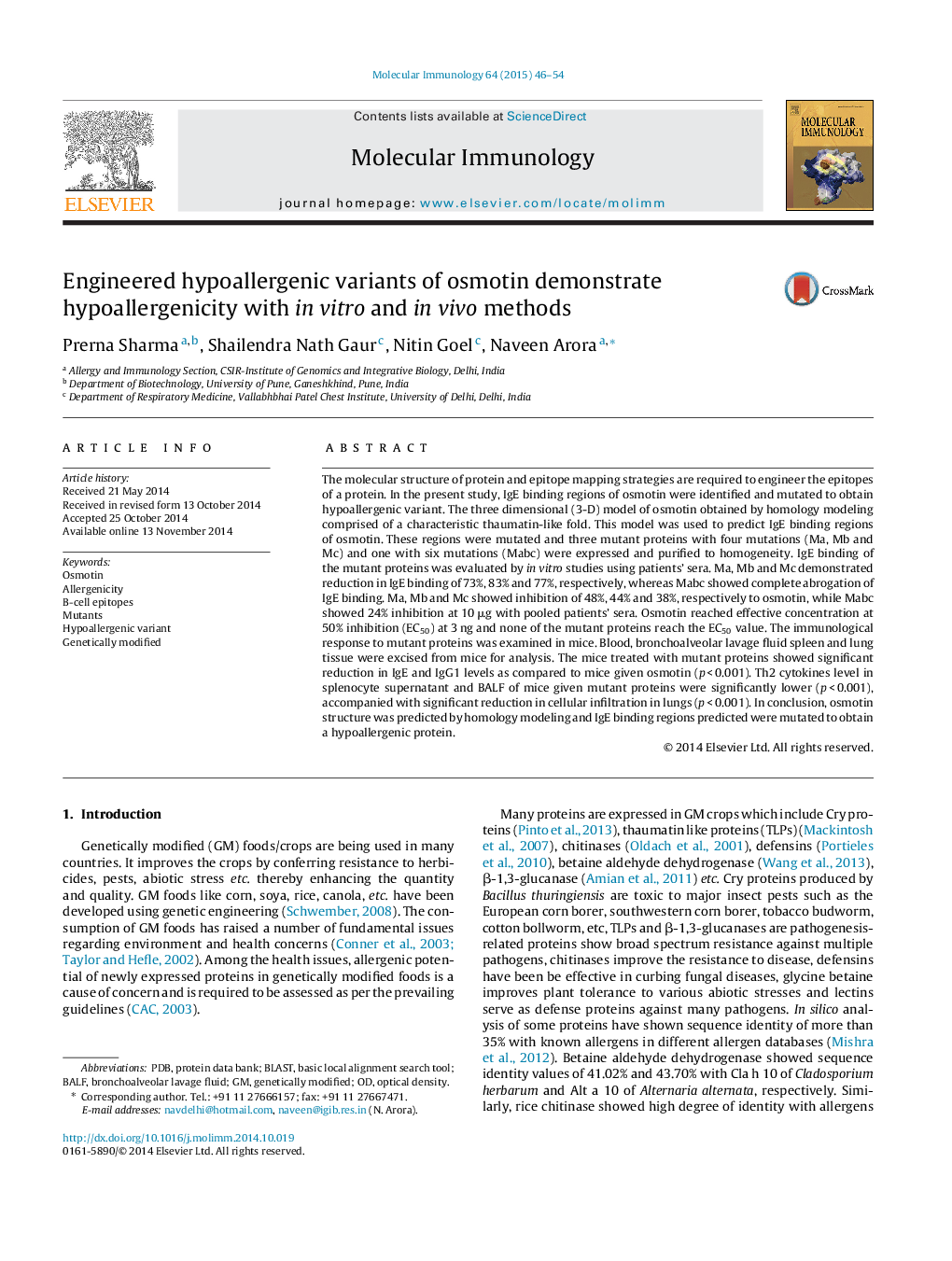| Article ID | Journal | Published Year | Pages | File Type |
|---|---|---|---|---|
| 5916580 | Molecular Immunology | 2015 | 9 Pages |
Abstract
The molecular structure of protein and epitope mapping strategies are required to engineer the epitopes of a protein. In the present study, IgE binding regions of osmotin were identified and mutated to obtain hypoallergenic variant. The three dimensional (3-D) model of osmotin obtained by homology modeling comprised of a characteristic thaumatin-like fold. This model was used to predict IgE binding regions of osmotin. These regions were mutated and three mutant proteins with four mutations (Ma, Mb and Mc) and one with six mutations (Mabc) were expressed and purified to homogeneity. IgE binding of the mutant proteins was evaluated by in vitro studies using patients' sera. Ma, Mb and Mc demonstrated reduction in IgE binding of 73%, 83% and 77%, respectively, whereas Mabc showed complete abrogation of IgE binding. Ma, Mb and Mc showed inhibition of 48%, 44% and 38%, respectively to osmotin, while Mabc showed 24% inhibition at 10 μg with pooled patients' sera. Osmotin reached effective concentration at 50% inhibition (EC50) at 3 ng and none of the mutant proteins reach the EC50 value. The immunological response to mutant proteins was examined in mice. Blood, bronchoalveolar lavage fluid spleen and lung tissue were excised from mice for analysis. The mice treated with mutant proteins showed significant reduction in IgE and IgG1 levels as compared to mice given osmotin (p < 0.001). Th2 cytokines level in splenocyte supernatant and BALF of mice given mutant proteins were significantly lower (p < 0.001), accompanied with significant reduction in cellular infiltration in lungs (p < 0.001). In conclusion, osmotin structure was predicted by homology modeling and IgE binding regions predicted were mutated to obtain a hypoallergenic protein.
Related Topics
Life Sciences
Biochemistry, Genetics and Molecular Biology
Molecular Biology
Authors
Prerna Sharma, Shailendra Nath Gaur, Nitin Goel, Naveen Arora,
